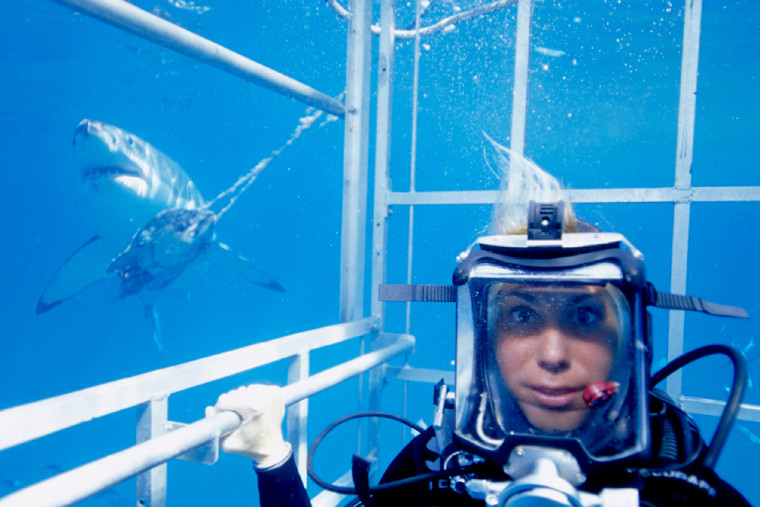Just when you thought it was safe to go back in the water, National Geographic Ultimate Explorer is back with an amazing look at one of the ocean’s most notorious — and deadly — predators, the great white shark. Despite the risk, Ultimate Explorer correspondent Mireya Mayor and acclaimed underwater cinematographer Bob Cranston are on a mission to get close to these ferocious predators.
Cranston has developed a unique sound wave device, called Shark Sonics, to attract sharks. He and Mayor will test the device, seeking out great white sharks at one of their most active feeding grounds, Guadalupe Island, Mexico.
By the numbers, the great white shark is a formidable creature. The largest predatory fish in the ocean, it can grow to be more than 21 feet in length and can weigh up to 2 tons — 80 percent of which is pure muscle. With a top speed of over 21 miles per hour, they can swim faster than the fastest Olympic swimmer, and their multiple rows of razor-sharp teeth can cut right through prey with ease. Aggressive and elusive, they are difficult to study and even tougher to get close to.
For years, researchers lured sharks to their boats with chum, an oily mixture of fish parts and blood. But in addition to attracting sharks, chum also excites them, sending them into a frantic feeding frenzy that puts divers — and research equipment — at risk. Cranston hopes that his sound wave device will prove to be an effective alternative to chum without any of the negative effects. So far it appears to work with some shark species, but will it work on great whites?
With Mayor at his side, Cranston puts Shark Sonics to the test and attempts the unthinkable: encountering a great white shark without a cage, armor or any barrier between him and his fearsome quarry.
